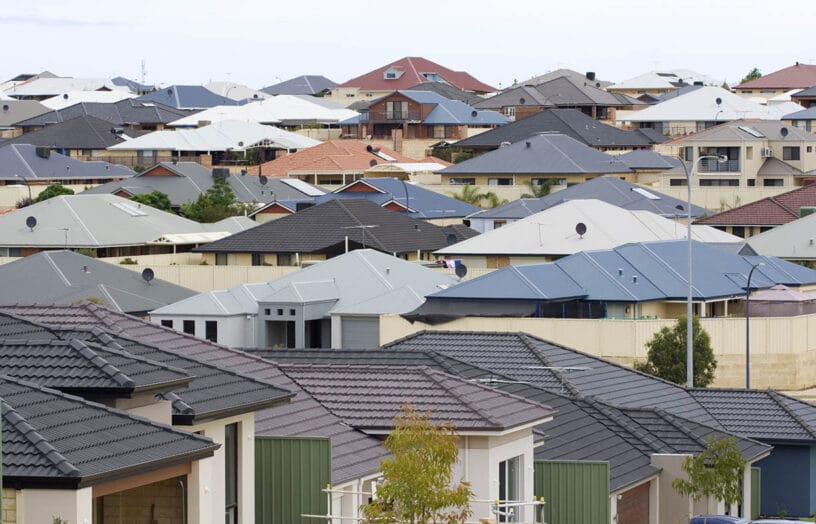Lessons from an energy expert

The best way to do energy efficiency upgrades to your home? Call an expert before you start, writes Greg Howell.
Ten years ago, we were living in our freshly renovated, energy-efficient house and large garden in the Northern Rivers when we started considering further education options for our children. We decided it would be best to move to the Gold Coast.
Once we committed to the move, we started looking for somewhere with good proximity to public transport and minimal risks from potential climate-change impacts such as flooding, coastal inundation and bushfires. There is a lot of high-rise living in the Gold Coast, but that didn’t appeal to us, so we decided we wanted a house in the suburbs with a good-sized block.
We found and purchased a brick veneer house that was walking distance to the newly-opened Parkwood East light rail station in the Health and Knowledge precinct. The house is now about 30 years old and was a former student rental, so although it was sound, it was a bit tired and unloved. And the large backyard had only two shrubs.
As the Gold Coast is climate zone 2 (warm, humid summer, mild winter), we decided to make some upfront changes. So, before we moved in, we installed several reverse-cycle air conditioners, added overhead fans to all rooms, replaced all the lights with LEDs and painted the internals. We then planted out a subtropical garden that included fruit trees and several veggie garden pods. We added compost bins and a worm farm, and were feeling more at home.
Energy efficiency upgrades
Having read every issue of Renew and Sanctuary for many years, we had lots of energy-efficiency ideas. Over time we:
• added two covered outdoor areas for summer shading from the north and west
• had a 6.6kW PV roof system installed
• upgraded to an external electrical hot water system and timer to utilise daytime solar PV
• installed a new kitchen with all new electrical fittings including an induction stovetop
• bought an EV and had a home charger fitted.
Residential efficiency scorecard assessment
I have been involved in the Renew Gold Coast Branch for the past few years and I had previously asked Home Energy Adviser Seb Crangle to come and give a talk on “energy efficiency in apartments” for a public event that we ran.
I was impressed with Seb’s presentation and knowledge, so I asked him to visit our home and see what else we could do to improve its energy efficiency. We weren’t that interested in getting an energy rating or certificate, but in hindsight realised that it is a very good thing to have. In fact, if we had known a home energy consultant 10 years ago it would have been much better to get an expert involved at the start of our upgrades instead of blundering along as we did!

Energy assessment results
The assessment was extremely easy and took only a couple of hours and cost around $400. Seb gave my wife and I the opportunity to ask questions at the beginning and end. This meant that, as well as the report, we received lots of innovative ideas, information and clarification on issues we hadn’t resolved ourselves.
To our surprise, our house received an 8.3-Star rating! Apparently houses of this vintage would typically have a rating of 2 to 3 Stars, so it was very satisfying to know that the changes we had made had a good and measurable impact on the energy efficiency of our home.
However, for me, the best outcome of the assessment were the ideas Seb generated for further improvements to the home that we had not previously considered.
Together we developed some ideas for further projects to continue reducing our energy impact, including:
• checking the house ceiling insulation is properly spread, and upgrading it to a higher R-rating
• insulating the wall between the double garage and the living room
• insulating the garage roll-a-door to limit heat ingress into the garage
• insulating the garage ceiling
• sealing the bathroom exhaust fans with self-closing mechanisms so there is no heat ingress when they’re not in use
• upgrading to higher-rated air conditioners when replacements are needed
• installing a home battery.
Our main recommendation
If you are thinking of making any energy-efficiency upgrades to your home, we would strongly recommend getting an energy assessment first to find out what changes will have the most impact for the lowest cost. For a fee of a few hundred dollars, it makes a lot more sense than doing some expensive work that may not be the most cost effective or productive. Plus, you get a certificate and rating to show you what a wonderful job you’ve done (or are about to do)!
Further reading
 ReNew
ReNew
Why can’t we have true low-cost housing?
The cost of housing has risen so rapidly in Australia that many have been priced out of the housing market, with Australia having some of the highest housing costs in the world. But there are some cheaper options we could utilise. Lance Turner investigates.
Read more Climate change
Climate change
Charting possibilities of the blue economy
Mia-Francesca Jones explores the opportunities of the blue economy for oceanic health, as well as human and planetary wellbeing.
Read more All-electric
All-electric
Mandatory disclosure of energy ratings on the horizon
Graham Hunt introduces us to a soon-to-be-implemented national framework that will be a massive win for renters and homebuyers.
Read more

